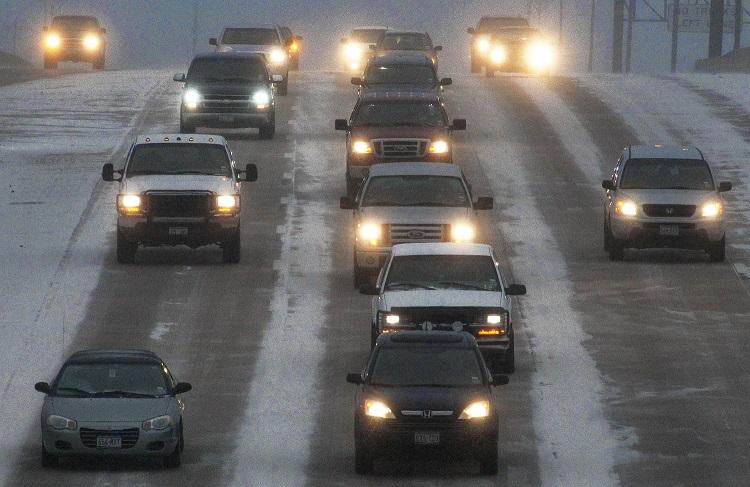While the snow brings many wonderful things, including epic snowball fights in one’s backyard and consecutive days without school, snow can also be scary when it lies on the surface of roads waiting for a driver to experience a brief mental lapse behind the wheel.
As a relatively new driver who received her license in late August, Katelyn Capprini discovered that driving is not as easy as it seems. According to Capprini, a junior at SHS, “Winter driving is so nerve-wracking for me because I really don’t know what to expect.”
After years of observing other people at the wheel, whether it be her parents or older friends, Capprini knew that winter driving is “definitely dangerous and something you need to be pretty careful with.” Among the many dangers of winter driving, including black ice and sharp turns, she realized that a driver must stay focused on the road at all times, especially if their visibility is impaired by millions of tiny snowflakes.
Senior Jessi Tassini knows what it’s like to lose control of her car in the middle of a slippery road. Driving home from a Bruins game last winter, Tassini suddenly found herself stuck in the middle of a snowstorm with her friends in the backseat, all of them oblivious of what would happen next. In less than a second, the car had fishtailed and swerved out of control.
“I was lucky no one was around and didn’t hit anything,” Tassini said, as she recounted the terrifying experience.
Similarly, junior Sean Williams experienced the same problem while driving home from his first club lacrosse practice in a snowstorm. With just one turn of the wheel, he had lost control of his car and faced what seemed like an imminent catastrophe. Although he and Tassini were indeed lucky that their situation hadn’t been worse, many people have experienced similar horrors on the road, resulting in less fortunate circumstances.
Based on statistics from IcyRoadSafety.com, there were at least 458 deaths during the 2009-2010 winter season alone. Even in normal conditions, driving is a difficult skill to learn. Not only does a driver have to be constantly aware of their surroundings, but they must take into account the multitude of obstacles they might face on the road.
“I would keep a larger driving distance between myself and the car in front of me and hope that the person behind me does the same,” said foreign language teacher Mr. Haddad. From an adult’s perspective, driving in the winter requires people to act more responsibly on the road and consider the extra dangers that come with driving on slippery surfaces. No matter how late a person is to an appointment or activity, they should drive carefully and avoid putting themselves, as well as other people, in danger.
For more winter driving tips, visit the following website <http://exchange.aaa.com/safety/roadway-safety/winter-driving-tips/>
Top Winter Driving Tips:
-
Always keep at least half a tank of gasoline in your vehicle
-
Stay informed with local weather reports
-
Don’t slam your foot on the accelerator or the brakes
-
Drive cautiously and slowly
-
Increase your following distance behind another car to eight to ten seconds
-
Whether you have antilock brakes or not, the best way to stop is threshold braking
-
Do not use cruise control when driving on any slippery surface
-
Make sure the exhaust pipe isn’t clogged with snow, ice or mud
-
When in doubt, stay at home
